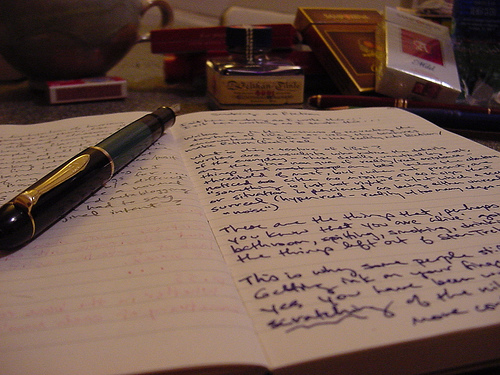BY: MARK KONING
I have found Art to be a great therapy tool. I say that with a capital ‘A’ because I am referring to all forms of Art, from singing to painting, dancing to acting. For me, writing is something I use as my coping mechanism and support for understanding. Writing is my learning tool and aids my growth. But throughout my life it has been anything creative that has made an impact. It is the ability to use the imagination, to soar high and move forward.

I have heard many stories about the ways in which a form of Art has helped individuals deal with brain injury, such as music or sculpting. Creating seems to bring about a relaxation to the mind, and a flow to the body. Even listening to music can offer someone motivation. Looking at pictures or staring at a painting can begin to alleviate pain.
Art is in the eye of the beholder, and because of this freedom, it can bring huge amounts of joy to the heart. It does this for plenty of people both with and without a disability because creative arts are like magic to the soul.
Doing the craft yourself or witnessing it within the pages of a book, a stage, the big or small screen; the brain becomes active and stimulates emotions. These are emotions which otherwise tend to remain stagnant when stuck in a cycle of isolation, depression, or frustration. Just calm down and pick up a paint brush, hum a tune or get lost in the cloud of the imagination. I’ve seen brain injury survivors come alive and develop a passion because of Art. Those powerful feelings can be transferred onto other challenges such as cleaning the house to going to a regular job.

Dr. Lukasz M. Konopka states in Where art meets neuroscience: a new horizon of art therapy,
Various fields use the concept of brain plasticity. One such very exciting, emerging field involves the study of art and the brain, or art therapy. … in terms of therapy, there is no difference between using scientifically validated novel art therapy and other current standard therapeutic interventions. Treating human pathology using art gives us a tremendous alternative unique and novel option for engaging brain networks that enhance the way the brain processes information, incorporates external and internal data, and develops new efficient brain connections.
Whether you are looking at art from a scientific standpoint, a therapeutic one, or as just a hobby, there is no doubt that the effects that dance upon the brain are inspiring.
Since sustaining his brain injury at an early age and now armed with a Creative Writing diploma and a social responsibility, the goal for Mark is to share, inspire and grow, with others and himself. To learn more, you can visit his website at www.markkoning.com
Filed under: Mental Health, SURVIVOR ART, Survivor Stories Tagged: art, art therapy, creativity, Mark Koning, Survivor stories, Writing
![]()
Source: BIST Blog




